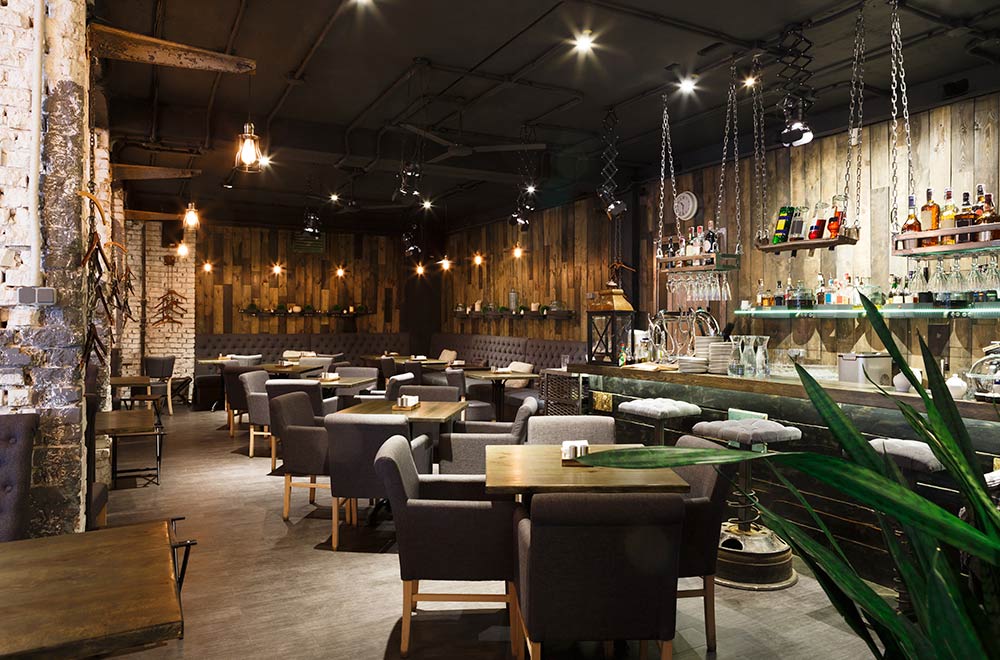Savor Authentic Oriental Food With a Pan-Asian Twist for a Culinary Experience
Starting a culinary journey through genuine Asian food, enhanced with a Pan-Asian spin, uses a distinct chance to discover the abundant tapestry of flavors that define the region's diverse culinary traditions. This experience welcomes you to appreciate the beautiful balance of tastes-- wonderful, salted, spicy, and sour-- balanced by fragrant herbs and spices. Visualize the innovative blend of Thai curry and ramen or the unexpected pleasure of sushi burritos. As you ponder these attracting dishes, think about the social stories and historical impacts that shape them, each bite using a tale waiting to be discovered.

Checking Out Pan-Asian Flavors
In the world of international gastronomy, Pan-Asian food attracts attention for its exceptional variety and the harmonious interplay of tastes from various Asian cultures. This culinary approach celebrates the rich customs and unique components located throughout the continent, producing a tapestry of tastes that is both satisfying and intriguing. Trick to Pan-Asian cuisine is its ability to stabilize contrasting tastes-- sweet, salty, spicy, and sour-- while highlighting the freshness and high quality of each component.
From the umami-rich soy sauce of Japan to the fiery chili peppers of Thailand, Pan-Asian food provides an extensive scheme of flavors. These aspects are often combined in innovative means, improving dishes with layers of complexity. For example, the use of great smelling herbs such as lemongrass and cilantro, usual in Vietnamese and Thai cuisine, adds a revitalizing brightness to dishes, while the consolidation of coconut milk delivers a velvety, abundant structure.
The focus on fresh fruit and vegetables and fragrant flavors guarantees that each dish is not only a banquet for the taste yet additionally for the detects. Pan-Asian cuisine welcomes diners to embark on a culinary journey, discovering the substantial and differed landscapes of Oriental gastronomy with every bite.
Combination Dishes to Attempt
While Pan-Asian cuisine is celebrated for its typical tastes, the modern cooking landscape is significantly accepting blend dishes that blend these classic elements with influences from other areas. This ingenious strategy not only honors the rich heritage of Eastern cookeries however also introduces novel taste experiences that interest contemporary tastes buds.
A prime instance of such a blend meal is the Korean-Mexican taco, where marinated bulgogi beef is covered in a warm tortilla, covered with kimchi and a zesty gochujang-infused salsa. This combination weds the strong, full-flavored flavors of Korea with the vibrant, fresh components of Mexican food. Likewise, sushi burritos have gotten popularity, integrating the fragile artistry of Japanese sushi with the hearty, hand-held ease of a burrito, frequently including combination active ingredients like tempura shrimp and avocado with a drizzle of wasabi mayo.
One more significant recipe is Thai curry ramen, which infuses the luscious, aromatic seasonings of Thai curry right into the soothing broth of standard Japanese ramen, producing an unified mix that entices the senses. These fusion dishes extend past plain uniqueness; they represent a cooking discussion between cultures, motivating expedition and development in the world of Pan-Asian food.
Essential Ingredients and Spices
To genuinely value Pan-Asian food, one should recognize the vital ingredients and seasonings that form its structure. This diverse culinary style attracts from a rich tapestry of Oriental practices, employing a harmonious blend of structures and flavors. Trick ingredients include soy sauce, fish sauce, and oyster sauce, which give a mouthwatering umami deepness important to Oriental recipes. Complementary to these are rice vinegar and mirin, lending a delicate level of acidity and sweet taste.
Aromatic aspects are pivotal, with ginger, lemongrass, and garlic being common throughout various Pan-Asian recipes. These active ingredients supply a fragrant base asian restaurant isb that boosts the complexity of flavors. Flavors such as celebrity anise, cardamom, and cinnamon introduce heat and character, resembling impacts from areas like China and India.

Food Preparation Techniques and Tips
Mastering the art of Pan-Asian food calls for experience with its unique cooking methods, each adding to the vibrant tapestry of flavors this cooking custom is celebrated for. Central to these approaches is the stir-fry, a rapid cooking strategy that protects the nutritional stability and dazzling colors of components. Utilizing a frying pan, the stir-fry method permits for also heat distribution, necessary for achieving the particular texture and taste equilibrium of Pan-Asian dishes.
An additional fundamental strategy is steaming, especially widespread in Chinese food. This gentle method maintains the all-natural flavors and nutrients of active ingredients, making it excellent for seafood and vegetables. Dumplings, a beloved staple, commonly take advantage of steaming, leading to soft, delicious structures.
Cooking, additionally important, imparts smoky depths to meals such as Korean bulgogi or Japanese yakitori (asian fusion restaurant). This method frequently entails marinading active ingredients, enabling flavors to pass through deeply prior to cooking over an open flame or warmer
Last but not least, understanding the art of stabilizing tastes-- pleasant, sour, salted, bitter, and umami-- is important. Appropriately layering these elements can raise a dish from average to phenomenal, supplying a complicated and pleasing culinary experience that symbolizes the essence of Pan-Asian food.
Eating Experiences Worldwide
Around the world, Pan-Asian cuisine supplies an unmatched eating experience, commemorated for its rich tapestry of tastes and lively presentations. This culinary sensation has transcended social limits, catching the hearts and tastes of food enthusiasts worldwide. In cosmopolitan cities like New York, London, and Sydney, Pan-Asian restaurants offer as fusions where cooking practices from Thailand, Japan, China, and beyond assemble, providing diners with a diverse mix of recipes that highlight the region's variety.
The international allure of Pan-Asian cuisine lies in its capability to offer both authenticity and development. Chefs skillfully marry standard components such as lemongrass, soy sauce, and miso with contemporary strategies, causing meals that are both acquainted and refreshingly new. This blend enables diners to embark on a cooking trip that values heritage while accepting modernity.
Furthermore, dining experiences are elevated via thoughtfully made settings that mirror the principles of Pan-Asian looks. From minimal Japanese-inspired insides to lively Thai-themed spaces, each dining establishment provides a special setting that matches the culinary offerings. Because of this, clients are not merely eating a dish yet partaking in a cultural experience, making Pan-Asian dining an absolutely international sensation.
Conclusion
The exploration of Pan-Asian food offers a profound understanding of the complex interplay of flavors and culinary practices throughout Asia. By accepting fusion meals such as Thai curry ramen and sushi burritos, the culinary trip not only highlights the versatility of standard active ingredients but also showcases cutting-edge contemporary strategies. This gastronomic journey, enhanced by cooking approaches and important flavors, offers an unique opportunity to value the multiculturalism and cooking artistry that define Pan-Asian food on an international scale.
Beginning on a culinary trip with genuine Oriental cuisine, enhanced with a Pan-Asian twist, offers a special chance to check out the rich tapestry of tastes that define the area's varied culinary traditions.In the realm of international gastronomy, Pan-Asian food stands out for its exceptional diversity and the harmonious interaction of tastes from various Eastern societies. Secret to Pan-Asian food is its capacity to balance different tastes-- sweet, salted, spicy, and sour-- while highlighting the quality and quality of each ingredient.
